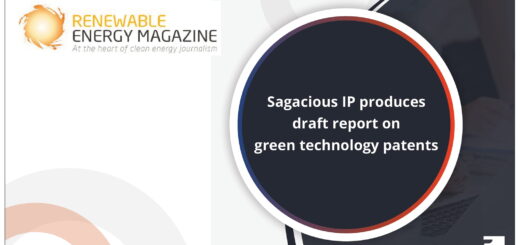IPWatchdog – How to Avoid USPTO Rejections in Patent Drawings
“Accurate and clear patent drawings strengthen and enhance patent applications, helping patent examiners who are already overburdened with applications to understand inventions faster.”
Russian writer Ivan Turgenev wrote in 1861, “the drawing shows me at one glance what might be spread over ten pages in a book”. This phrase holds particularly true in the case of patent drawings, which are regarded as a universal language. Use of drawings hold considerable significance in the case of inventions that can often be more easily explained through drawings than through descriptions.
Accurate and clear patent drawings strengthen and enhance patent applications, helping patent examiners who are already overburdened with applications to understand inventions faster.
In this article, we will be covering the essential points on the importance of patent drawings and how we can make the drawings feasible for filing at the USPTO. We will also cover some important guidelines to help you to avoid unwanted office actions.
Table of Contents
Why Does the USPTO Require Patent Drawings?
As you can see in the example below – a blurred picture has been converted into line drawings to look more accurate and precise.


Drawings like this play an essential role in USPTO filings:
- Clarifying the Claims: Besides the ornamental aspect, drawings help in understanding the description or the claims of the patent application. Simple, clear, and precise drawings also help to instruct USPTO examiners in cases of patent infringement – clarifying the patent owners’ claims and clinching the decision in their favor.
- Amendments: At times, drawings can even make the applicant understand his or her invention better, and that is why drawings can also work to the advantage of patent holders in negotiating damages or a settlement and ensuring that the drawings are descriptive enough to represent the patent.
- Prevents Infringement: This is one of the most important benefits of drawings. An accurately prepared drawing makes the patent understandable and unambiguous, which means that potential infringers will think twice before plagiarizing. And as we know that the earlier an infringement is deterred, the better it is for patent owners.
Guidelines: PCT vs. USPTO
For patent drawings, there are several rules followed by different patent offices, including the USPTO and the World Intellectual Property Organization (WIPO), which administers the Patent Cooperation Treaty (PCT).
Some requirements are universal to all patent offices, but there are some differences as well between drawing requirements for the USPTO and PCT filings.
One of the differences is the size of paper on which drawings can be submitted:
- PCT: the PCT only accepts A4 size pages, which is also why it is the most acceptable page size around the globe.
- USPTO:the USPTO allows both letter size paper or A4 size paper.
Apart from this, the following guidelines can help you to get your patent drawings approved by the USPTO. There are also some variations in guidelines for Utility versus Design drawings:
1. Utility
- Direct Submission
The images or sketches should not be filed directly to the office. There should be a proper black and white line drawing, which is highly preferred by almost all of the judiciaries, along with the USPTO.
Also, when you are submitting patent drawings, the sheets should be free from any folds or creases.
Only one side of each sheet should be used.
- Use of Color or Greyscale Image
Not all patent offices permit photographs to be used instead of black and white line drawings. However, there are some jurisdictions, including the USPTO, WIPO, Intellectual Property India, etc., where photographs are permitted in utility patent applications on rare occasions only. Photographs can only be used in black and white or greyscale, if they are the only practical medium to disclose the invention. For example – cell diagrams, plants, vivo images, or microorganisms cannot be achieved via line drawings.

Similarly, color photographs can be accepted in utility patent applications if black and white or greyscale fail to satisfy.
However, black and white line drawings are the most preferable and accepted by almost every patent office.
- Margins
Incorrect margins are one of the major factors in application errors leading to USPTO rejections. Drawings must be kept within the following margins: (top: 2.5cm; left side: 2.5cm; right side: 1.5cm; bottom: 1cm).

- Types of Views
To make your utility patent drawings self-explanatory and descriptive as per the requirement of the patent application, you can add several views from the list:
- Perspective View
- Isometric View
- Plan views
- Detailed View/ Enlarged View
- Partial View
- Sectional View
- Partial Sectional View
- Exploded View
- Assembled View
- Numbering of drawings:
After placement of the drawings/views, the views should be numbered in Arabic numerals in continuation from number 1. View numbers must be preceded by the abbreviation “FIG.” instead of the full text. E.g., FIG. 1, FIG. 2, FIG. 3 …and so on.
- Text Size
Another common error that often leads to an office action is the size or the height of the font, which has to be at least 0.32cm. Any text or reference character less than 0.32cm in size is not permitted.
Ensure that the reference characters are placed neatly in drawings and clearly visible to ensure compliance.
- Numbering of Sheets
Similar to figures, all the sheets contained in the USPTO application shall be numbered in consecutive Arabic numerals – where the numbers shall be centered at the top or bottom of the sheet, but shall not be placed in the margin. E.g., 1/7, 2/7, 3/7 … and so on.

- Alterations
It is advisable that each sheet should not have any alterations. It should be clean, neat and should not have any kind of stain, overlapping, cross lines, erasures, overwriting or any leftover marks of a photocopy.
Non-compliance with this rule may be acceptable if the genuineness of the content is not in question and the requirements for good reproduction are not at stake.
- Other Special Requirements
Other factors in a drawing that can lead to approval or rejection of a patent include:
Drawings with durable, black, sufficiently dense and dark, uniformly thick and well-defined lines and strokes without colorings.

Cross-sections indicated by oblique hatching should be clear. Numbers, letters and reference lines should be neat and as per the standards.
These were a few guidelines for utility patent drawings and although most of them are common for design patent drawing, there are still few differences in guidelines for design patent drawings such as:
2. Design Patents
1. Differentiating the claims: It is most essential to differentiate the claimed portions from the rest of the parts.

For example, the parts which are not considered as the claimed design are depicted here in broken lines to differentiate them from the claimed ones shown in solid lines. This is also done for ease in understanding the overall design.
2. Types of Views: The guidelines suggest that the claims of the design can be better understood with standard design views such as front, rear, right and left sides, top, bottom, and a perspective view to clearly show the appearance and shape of the design in three-dimensional format.
3. Scaling & Projections: Unlike utility patents, applications for design patents rely fully on the drawings where scaling and projections of views, as well as parts are really important to maintain the consistency of drawings and features throughout the set.
4. Surface Shadings:The USPTO requires all surfaces of claimed design to be appropriately and adequately shaded: “Shading should be such that shows clearly the character and contour of all surfaces of any three-dimensional aspect of the design.”

This requirement makes USPTO design drawings appear more precise than those of most other countries, which do not include shading or broken lines. This requirement is mandatory for design drawings to be accepted by the USPTO.
Make a Checklist
The above guidelines are based on USPTO regulations for Utility and Design Drawings when filing provisional and non-provisional patent applications. These simple tips can be helpful in acting as a checklist to ensure the capabilities of the professional patent illustrator and to avoid unwanted office actions that can dig a hole in your pocket before you hire any professional.
Originally published on: https://www.ipwatchdog.com/2021/02/04/avoid-uspto-rejections-patent-drawings/id=129626/




